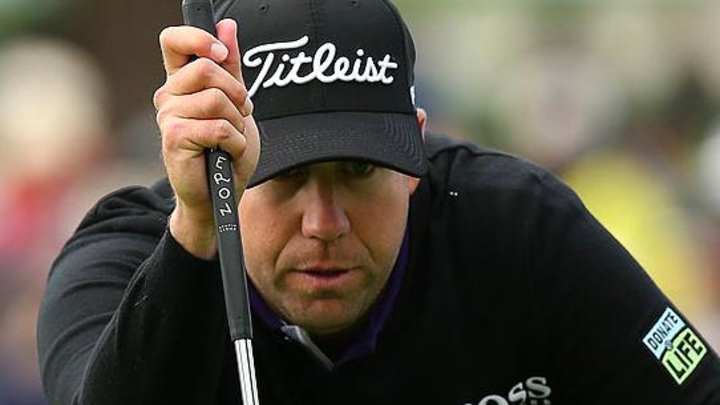No One Remembers Who Finished Second, Especially Not These U.S. Open Players

A great philosopher of the late 20th and early 21st century taught us something important:
“Second place sucks.”
His name was Tiger Woods. He also dabbled in golf. And once at a Perkins restaurant.
For Tiger, if we can omit his last name, golf was all about “the W's,” as he called wins. That’s positive thinking and in his case it was based on results.
Walter Hagen said it better about seven decades earlier: “No one remembers who came in second.” We remember Hagen because he usually avoided runner-up status. The Haig won 11 major championships and had only two second-place finishes.
Second place doesn’t suck in golf (unless you’re the greatest ever). It’s still pretty good. If Jack Nicklaus had finished second instead of winning 18 majors and we combined those with his 19 other runner-up finishes, he’d have 37 second-place finishes. We’d remember him differently but we’d remember him.
The glory or the circumstances of winning a U.S. Open often overshadow the guy who finished second. Some shoulda-coulda won the Open. Some gallantly charged to the finish to get second.
Here is The Ranking of the 10 most forgotten U.S. Open runner-ups in modern golf history:
10. Stephen Leaney, 2003
Jim Furyk won this Open at Olympia Fields, one that wasn’t well received because the course, hosting its first major in 42 years, played too easy in the early rounds and then too difficult on the weekend. Leaney isn’t technically forgotten by American fans, they never heard of him before or since, apparently having missed his thrilling eight-stroke romp over Robert Karlsson in the 1998 Moroccan Open. He beat Darren Clarke in the ’98 Dutch Open and Bernhard Langer in the 2000 Dutch Open but never won in the U.S. So, he was legit.
Leaney played only 16 majors and his only other top-35 finish was a 17th in the ’04 Masters. After the ’04 U.S. Open, he played only four more majors and missed the cut in each. He finished fourth in the PGA Tour’s ’04 World Match Play but his only moderately big win after his brush with immortality at Olympia Fields came 16 years later when he won the ’17 Western Australia Open.
9. Erik Compton, 2014
How, you’re wondering, could we overlook a Cinderella story like Compton’s? He was a two-time heart transplant recipient, his tale is truly remarkable. Two things: One, he shared second place with Rickie Fowler, which is a lot like parking your Pinto next to a Mustang; two, Kaymer won by eight and was so dominant at the revamped Pinehurst No. 2 course that four shots was as close as anyone got to him over the final 48 holes. “No one was catching Kaymer this week,” said Compton, who won a lot of new fans. “We were all playing for second.” Which didn’t suck at all this time.
8. Dave Barr, 1985
The story of this Open was T.C. Chen, who scored a double eagle in the opening round but lost the lead on Sunday after he shanked an iron shot from the fairway on Sunday, then double-hit a chip near the green en route to a quadruple bogey. Some old-timers still say, “I guess I T.C. Chenned that one,” after a double hit. Andy North won the Open at Oakland Hills with his gritty, scrambling play. Barr could have been the first Canadian to win a major. Masters champ Mike Weir remains the lone member of that club. Barr, never known as Mr. Personality, later became the first Canadian to win on the Senior Tour … small consolation.
7. Ed (Porky) Oliver, 1952
Who doesn’t fantasize about having a major champion nicknamed Porky? Oliver, a Delaware native, was 5-feet 9-inches, 240 pounds, and deserving of his nickname. He was a tough golfer, though, losing a Masters and a PGA Championship to Ben Hogan. In 1952, he was runner-up to Julius Boros in the Open at Dallas’ Northwood Club. His biggest claim to fame, besides his eight official tour victories, was the 1940 U.S. Open. He finished in a tie with Gene Sarazen and Lawson Little but was disqualified because he teed off 30 minutes early, hoping to beat an advancing storm. How could we forget that, Pork? And pass the salt, please. Oliver died at 46 from lung cancer.
6. Forrest Fezler, 1974
Author Dick Schaap immortalized the ’74 Open with his book, “The Massacre at Winged Foot.” It was the year the USGA went a bit overboard with the course setup, likely in response to Johnny Miller’s 63 the year before at Oakmont. Nobody broke par in the first round and Hale Irwin won with a 72-hole total of 7 over par, the second highest winning score (at the time) since WWII (that’s World War II, not some World Wrestling Federation sequel abbreviation). The rough was so thick that Sam Snead, 62, broke a rib during a practice round swing and withdrew. We remember Fezler for being the only player in Open history to wear shorts — his little protest at the 1984 Open’s final hole at Oakmont but that’s another story — not for being an Open runner-up.
5. Clayton Heafner, 1949 and 1951
You have no excuse, Mr. or Ms. Golf Fan, for not remembering this North Carolina native. He was an Open runner-up twice. OK, it figures he was overlooked in ’51. He lost to Ben Hogan at Oakland Hills, which played so tough that nobody broke par until the final round when Hogan posted one of the finest rounds in Open history, a 3-under 67, and reportedly said at the award presentation, “I’m glad I brought this course — this monster — to its knees.” Heafner posted a sparkling 69 himself but Hogan stole the show. Heafner was a fierce competitor, went 3-0-1 in a pair of Ryder Cups and in ’49, helped the U.S. team (missing Hogan, Byron Nelson and Cary Middlecoff) rally from a 3-1 deficit to win. Heafner also played a series of Monday matches with Charlie Sifford in order to help him break golf’s color barrier.
4. George Burns, 1981
Normally, Burns was not the type to be overlooked. Ahh, you missed a great pun. His father was president of Smith-Corona typewriters and Durkee Foods. Burns won four PGA Tour titles but wasn’t a factor in majors except for the Open, where he had three other top-10s besides ’81. Burns, who was known to lose his cool on the course, had a three-shot lead after 54 holes at Merion but Australia’s David Graham played a near-flawless final round, shot 67, and by won three. Burns struggled to a closing 73 but Type-White hadn’t been invented yet so he couldn’t correct it. (More obsolete typewriter humor? Come off it …)
3. John Schlee, 1973
No, that’s not a made-up name. You don’t know it because he won only once on tour, the 1973 Hawaiian Open, and because he was runner-up in the Open at Oakmont where superstar Johnny Miller shot a stunning record 63 in the closing round to win, a feat he often discussed during his subsequent star turn as a golf announcer for NBC … but I don’t remember him mentioning Schlee. Also, Arnold Palmer was among the heartbroken contenders so the lesser-known Schlee didn’t get a lot of headlines. (What’s this — obsolete newspaper terminology? This column needs younger writers.)
2. Gregory Havret, 2010
Remember the time a Frenchman almost won a major championship? Yeah, well, this is the other Frenchman who almost won a major, not Jean Van de Velde. Conditions were tough at Pebble Beach in this Open, so tough that Graeme McDowell shot a closing 74 and still won. Havret shot 72 and got edged by one, surprising almost everyone, maybe even Havret, ranked No. 391 in the world at the time. “When you have Tiger Woods, Phil Mickelson and Ernie Els there, you don’t expect Gregory Havret to be the guy you have to fend off,” McDowell said. And yet it happened.
1. Deane Beman, 1969
True or false: It’s a good idea to hold an Open in June in southern Texas. The answer: False … unless you own the towel and water concession. The Open at Houston’s Champions Club was a real swelter-weight bout. “The Big Choke Open” is just one of its nicknames, in part because Champions played so difficult. No one finished under par for 72 holes and none of the top nine finishers broke par in the final round. Third-round leader Miller Barber could have joined a playoff if he’d closed with 75 but shot 78.
Meanwhile, the PGA Tour’s future hardball commissioner opened impressively with 68-69, shot 72 in the final round and shared second with Al Geiberger and future TV analyst Bob Rosburg. In his playing career, Beman was known as a grinder, a good iron player and a good putter but not a big hitter. He won four times, including a coveted Greater Milwaukee Open title (note the erroneous use of the word “coveted” by the former Milwaukee resident typing this piece). He also won the Quad City Classic in 1971 when it wasn’t an official tour event. Beman was also a two-time U.S. Amateur champion, a lofty achievement. He finished sixth in the ’67 Open, so he was no slouch himself. (Readers: Fill in “Caddyshack” punchline here _____).
Beman is in the World Golf Hall of Fame for his remarkable job of elevating the PGA Tour’s finances and success during his tenure but it shouldn’t be forgotten that he very nearly won a U.S. Open and robbed Orville Moody of his only career victory. Do you wonder if Beman had the same thought as baseball announcer/comedian/actor Bob Uecker when he was inducted into the Baseball Hall of Fame? During a hilarious speech at Cooperstown, Uecker dead-panned, “This is not sour grapes by any means … but I still think I should have gone in as a player.”
Agree? Disagree? Tell us at inbox@morningread.com and we may publish your letter. And to receive all the latest news and commentary free in your inbox every morning, sign up here.
